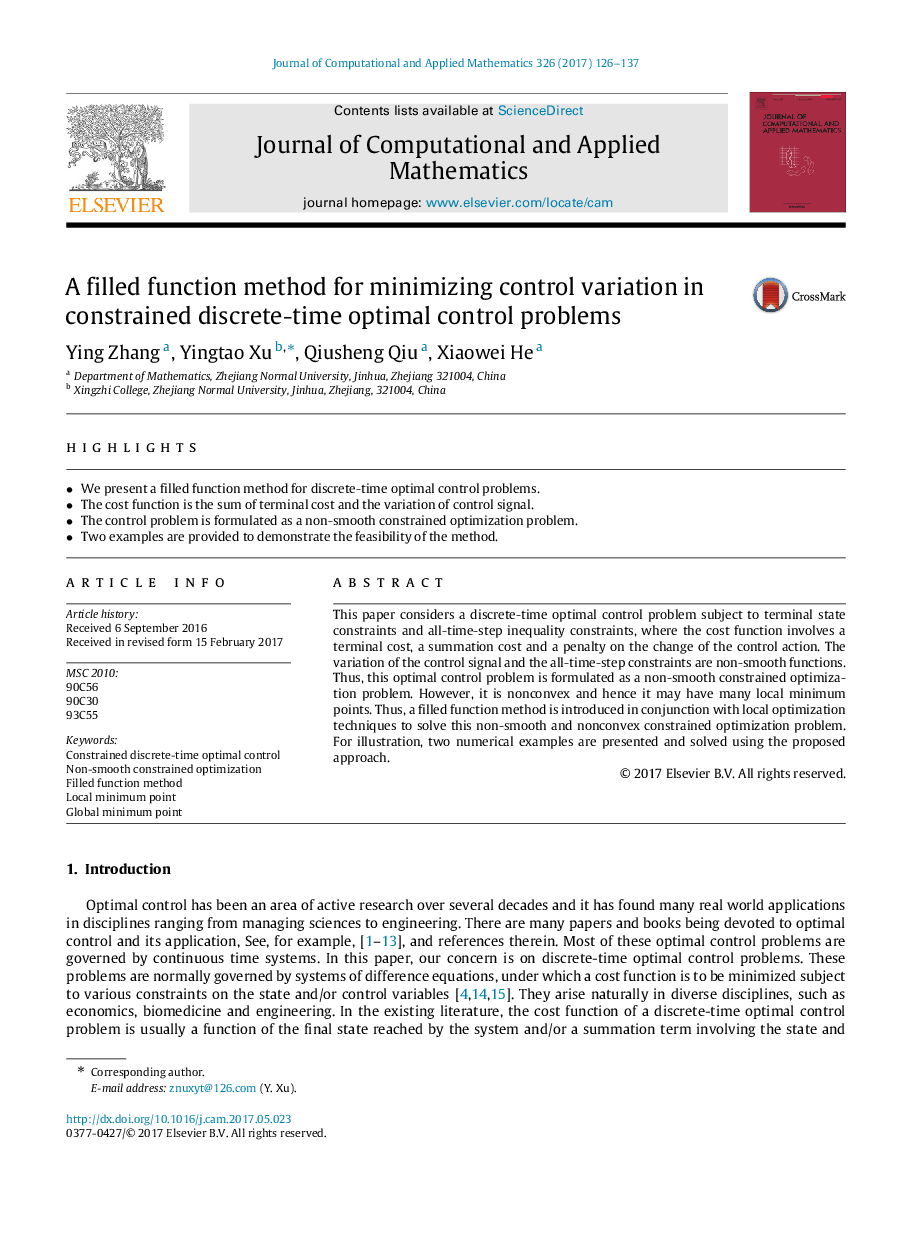ترجمه فارسی عنوان مقاله
یک روش عملکرد کامل برای به حداقل رساندن تغییرات کنترل در مسائل کنترل بهینه با زمان محدود
عنوان انگلیسی
A filled function method for minimizing control variation in constrained discrete-time optimal control problems
| کد مقاله | سال انتشار | تعداد صفحات مقاله انگلیسی |
|---|---|---|
| 89644 | 2017 | 12 صفحه PDF |
منبع

Publisher : Elsevier - Science Direct (الزویر - ساینس دایرکت)
Journal : Journal of Computational and Applied Mathematics, Volume 326, 15 December 2017, Pages 126-137
ترجمه چکیده
در این مقاله یک مسئله کنترل بهینه با زمان گسسته مطرح می شود که با محدودیت های حالت ترمینال و محدودیت های نابرابری همه زمانها مواجه می شود، جایی که تابع هزینه شامل هزینه های انتهایی، هزینه جمع و مجازات تغییر عملیات کنترل می شود. تغییر سیگنال کنترل و تمام محدودیت های مرحله ای، توابع غیر صاف است. بنابراین، این مسئله کنترل بهینه به عنوان یک مسئله بهینه سازی محدود به غیر صاف فرموله شده است. با این حال، آن غیر محصور است و از این رو ممکن است بسیاری از نقاط حداقل محلی را داشته باشد. بنابراین، یک روش تابع پر شده در کنار روش های بهینه سازی محلی برای حل این مشکل بهینه سازی محدود نشده غیر مسطح و غیر محرک معرفی شده است. برای مثال، دو مثال عددی ارائه شده و با استفاده از رویکرد پیشنهادی حل می شود.

